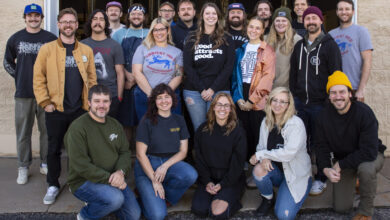
Your prospect will not take any action unless you ask them to. You may need to ask them more than once.
Why does finishing strong matter?
You can have a prospect completely wrapped around your finger and eating out of your hand, but you still need to ask for the order. You need the CTA (call to action). You need a compelling offer.
The Offer is the final part of the conversion equation. To review, we’ve covered the following in this series:
- Interrupt: Identify the hot button issue going on in the mind of your prospect. What is their No. 1 want or need? What is their most nagging problem?
- Engage: How would you solve that problem?
- Educate: Prove it. Give them objective information that informs them on how to make the decision to achieve their want or rid themselves of their problem.
- Offer: Tell them how to choose you as the solution.
The conversation equation can be used in direct mail, email, web, social media, print advertising, radio, television, and website landing pages. It’s the first contact you have with new prospects that may not know who you are.
Structure the offer
The purpose of the offer is to get one thing: action. What is it you want them to do? The answer to this question should be based on your sales process.
How long is your sales cycle? What is your lead time? How long does delivery take? Do you require customer inputs to finish the work? Is the product finished and sitting on a shelf, or do you need to modify it to customer specifications? Do they need to go through an intermediary such as financing?
- Is the product or service low cost and easily accessible (like a download)? Go for the BUY NOW button and take them to your online shopping cart.
- Do you need to speak with the prospect to customize their order? Go for the CONTACT US NOW headline and list ways to get in touch with you.
- Is the product or service only needed at special times? Go for the REQUEST MORE INFO button and have them leave their email to begin a drip campaign.
- Is the product or service complicated? You may need to offer a free report, ebook, or reference download to educate them further. Consider placing spec sheets and items with heavy text in a downloadable PDF.
Low-risk, no-risk
Whatever you decide to do, make it safe for the prospect. No gotchas, traps, or snares. Don’t trick them. Lead them. If you can’t reasonably eliminate all risk in the space of a short advertisement, then build trust over time. That time you put into building trust builds profit margin. People don’t want to be sold; they want to be informed.
Your goal is to have an offer so good, so no-brainer, that prospects would feel like an idiot if they did not take it. Close them on choosing you. No matter how compelling your interrupt, engage, and educate are, 99% of prospects walk away without the CTA.
Attribution
Also 99%? The number of people who will not buy the first time they interact with you.
This is known as customer attribution. Studies have shown you need to have around 5-12 interactions with a customer before they are willing to buy from you. The first 3-4 can happen without you knowing about it. That is the power of the internet. Prospects can perform research before you enter their brains. Then it’s a matter of them building up enough trust in your brand to make the decision to choose you over the competition. Those 5-plus touchpoints are all a part of their journey.
The buyer journey
1% of buyers are considered now buyers, also known as impulse buyers. They have come to the point in their purchase decision where they are ready to part with their money to receive the value they are looking for. It’s the candy at the checkout counter. It’s the apple pie at McDonald’s. It’s the extra spot-free rinse at the car wash. You engage these buyers with discounts and well-timed promotional placements. They are extremely rare. Don’t count on them to sustain your business. For the other 99%, they need to proceed through two phases of the purchase journey:
- Future Buyers
- Seeking to understand the benefits of ownership
- Wondering to themselves “Why should I buy?”
- Soon-To-Be Buyers
- Seeking objections to ownership
- Wondering to themselves “Why shouldn’t I buy?”
Your Now Buyers are at the point of vendor selection and are trying to figure out who to buy from. If you are entering at the end of the journey, you are in danger of losing margin and competing on price. You want to enter their journey much, much earlier. Try to catch them at the beginning.
Play the long game
The vast majority of buyers start at the Future Buyer stage and slowly progress to the Now Buyer stage. Think of it as an exponential curve:
Over time, prospects get more comfortable with understanding value and what they want. Their purchase timeline accelerates. The earlier you join their journey, the more trust you can build with them. That’s where the drip campaign comes in. Remind them why you are their first choice. Direct mail and email are the best options to do this. You can achieve this with postcards and email broadcast campaigns. You can also try to use social media if you have a good following built up.
Continue to hit the hot button. You can also talk about other applications available or the benefits of multiple levels of applications. Describe how the pricing metric works to establish value. Offer paths to upgrade, cross-sell, and bundle. The purpose of the drip campaign is to educate and create touchpoints along the journey. Maintain your customer attribution. Stay in the front of their mind.
Never take for granted that your prospects know anything about your business. They have their own lives to live. Teach them how to identify value in your market. Teach them to ask the questions your competitors don’t want to answer. Eliminate risk. Show value.
End of the journey
When your prospects reach the end of their buying journey, you will be there waiting for them. You are their friend. You taught them what to look for, you protected them from scams, fraudsters, and poor quality. They will reward your friendship and guidance by telling everyone about what a wonderful customer experience you gave them. Friends don’t ask for discounts. Friends pay full price. Friends offer referrals and sell you to others.
It takes time. Like all good things, they are worth waiting for. More trust equals more profit. Your high-margin clients who give great referrals need to be wooed. This is chess, not checkers. You need to play the long game to build a winning customer portfolio. You must constantly provide value and education. You must constantly remove risk and guarantee performance. You must constantly provide an excellent customer experience.
Remember, you don’t want one new sale from each customer. You want one new customer from each sale.



